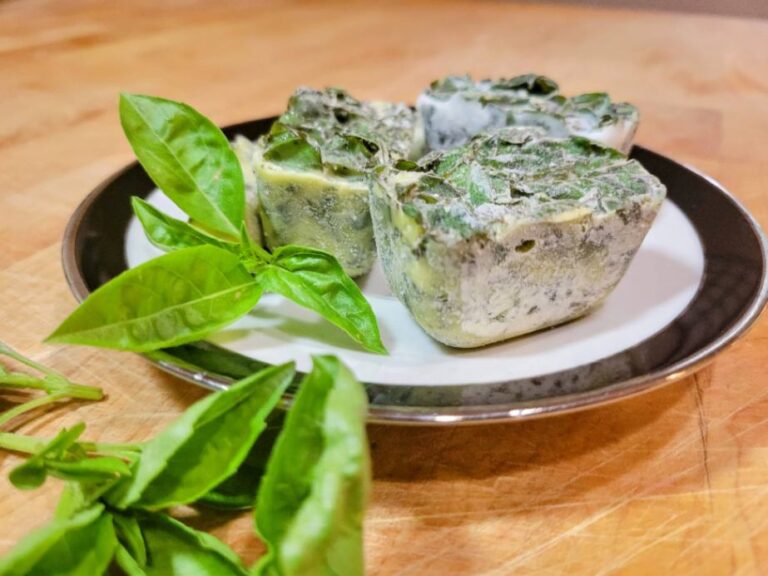This post may contain affiliate links which means I may receive a commission for purchases made through links. I only recommend products that I have personally used. As an Amazon Associate I earn from qualifying purchases. Learn more on my Private Policy page.
Certain herbs retain their flavor much better when preserved by freezing versus drying. Let’s explore the world of freezing herbs and discover which herbs are best suited for freezing preservation methods.
Freezing is an excellent way to preserve tender garden herbs such as basil, parsley, cilantro, dill, chives, and mint. Unlike drying, which is better suited to woody herbs like rosemary, sage, and thyme, freezing is the better alternative for retaining the flavor and aroma of more delicate herb varieties.
Let’s dive deeper into these 6 herbs and discover why freezing is an effective preservation method.
Table of Contents
1) Basil
Basil is at the top of the list of herbs that benefit from freezing versus other preservation methods, such as drying.

There are several reasons why basil is a standout choice for freezing:
- Flavor Preservation: Frozen basil has a fresh, bright flavor profile and aroma that is far more similar to fresh basil than dried basil when used in cooking.
- Culinary Convenience: Using frozen basil can be incredibly convenient when cooking. Tossing a frozen basil cube into your favorite dish can be a huge time saver.
- Seasonal Continuity: Year-round access to frozen basil is a close substitute for the convenience of having freshly harvested basil for cooking.
2) Parsley
Frozen parsley allows for more vibrant flavor and presentation possibilities in your cooking than dried parsley is able to match.

Parsley shines as a top herb for freezing due to these essential qualities:
- Minimal Flavor Loss: Frozen parsley retains much more of its fresh flavor compared to dried parsley. Its bright, peppery taste is maintained to a much greater degree when it’s frozen.
- Great Garnishment: The bright color and vibrant taste of frozen parsley as a garnish when serving soups, stews, or sauces is minimally diminished by freezing.
- Versatility: Parsley is a multifaceted cooking ingredient that can complement a wide range of dishes. Having frozen parsley on hand can enhance flavor and add a touch of vibrant green to your dishes.
3) Cilantro
The distinctive taste of cilantro can be maintained for culinary uses beyond the growing season by proper freezing.
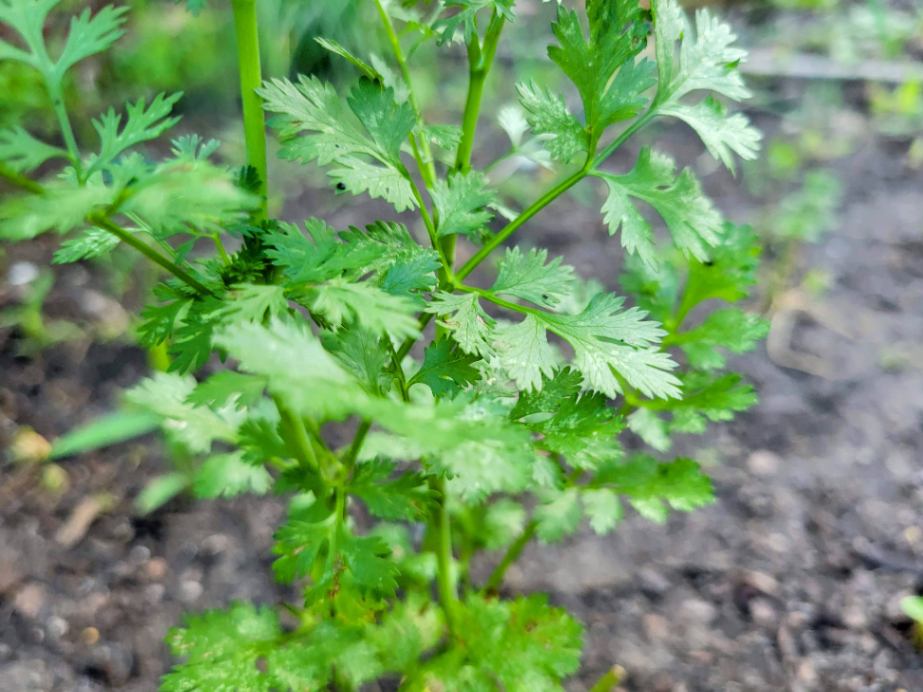
Cilantro’s versatility and vibrant flavor make it a prime candidate for freezing, due to:
- Quality Preservation: The aroma and fresh flavor of cilantro are far better preserved via freezing than by drying. While frozen cilantro shines when used in cooking, it’s essential to acknowledge that it can’t replace the vibrant freshness of fresh cilantro as a garnish.
- Year-round Mexican & Asian Staple: Having frozen cilantro readily available beyond the growing season can add a splash of authenticity to Mexican and Asian dishes year-round.
4) Dill
Freezing dill preserves its vibrant color and unique flavor and extends its shelf-life, ensuring year-round access.
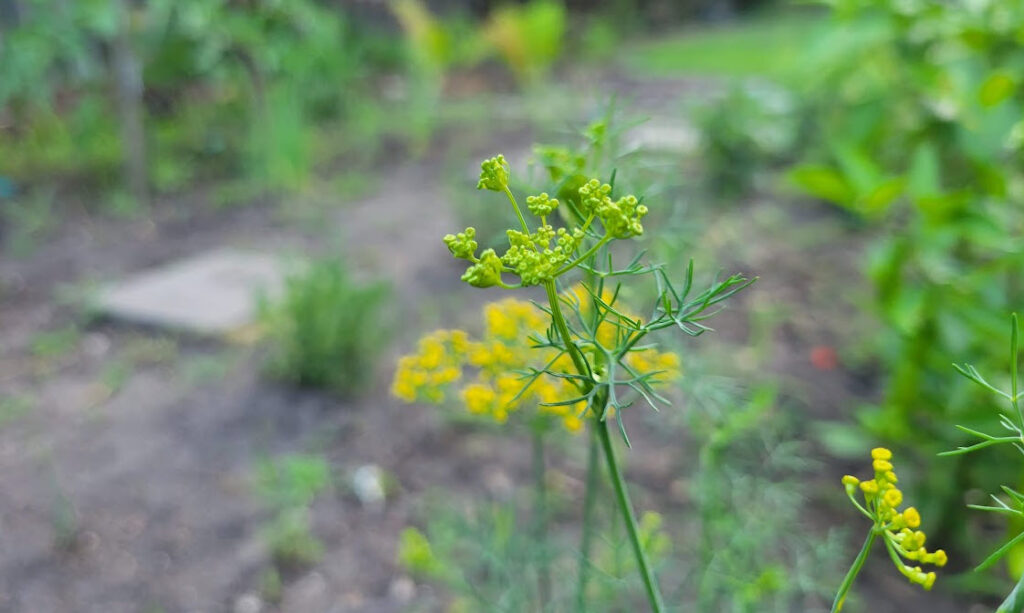
Several reasons why dill is an ideal herb for freezing include:
- No Browning: Freezing dill maximizes color retention compared to drying, preserving its fresh, vibrant appearance.
- Flavor Preservation: Dill’s distinctive flavor is conserved by freezing methods, which lock in its essence to a greater degree than other preservation methods.
- Extended Shelf-Life: By following proper freezing techniques for dill, you can enjoy its nearly fresh taste well beyond the gardening season.
5) Chives
Frozen chives retain their fresh flavor and texture while providing unmatched convenience for versatile culinary applications.

Chives are another excellent herb for freezing due to characteristics that include:
- Flavor Conservation: Freezing chives protects their fresh onion-like flavor far better than other preservation methods.
- Minimal Texture Loss: The crisp texture of chives is maintained quite well by freezing them relative to other types of preservation, such as drying.
- Ease & Versatility of Use: Frozen chives are extremely convenient to use, particularly if they’re already chopped. Adding a dash of frozen chives to garnish chili or flavor an omelet is quick and easy.
6) Mint
Freezing mint is an excellent preservation method as it maintains the herb’s aroma, color, and texture.
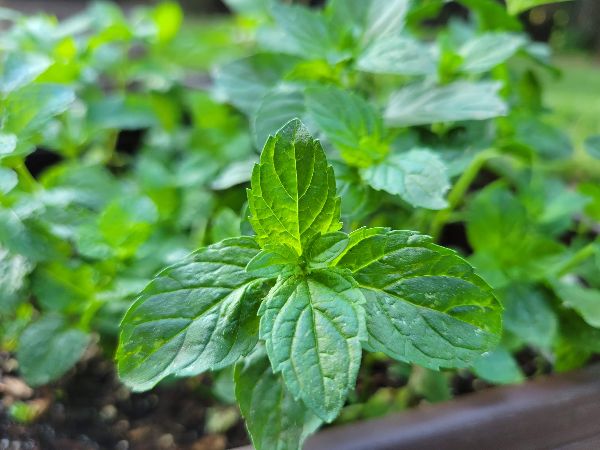
Mint likewise proves to be an excellent herb for freezing due to several essential qualities, including:
- Preservation of Aroma: Freezing mint is a superior method for conserving this herb’s aroma compared to other preservation methods. It should be noted, however, that frozen mint is generally not an adequate replacement for fresh mint as a culinary garnish.
- Convenient for Cocktails: Frozen mint works quite well as a convenient garnish in cocktails.
Best Way to Freeze Herbs
Besides identifying which herbs to freeze for preservation, understanding the optimal way to freeze herbs is equally important.
The best way to freeze tender herbs like basil, cilantro, and parsley is to freeze them in water or olive oil in ice cube trays to preserve flavor and color. For chives and dill, a great method is to finely chop and vacuum-seal them before freezing. Blanching basil, mint, and parsley also enhances freezer storage.
Let’s dig further into these herb-freezing methods to get the most out of freezing your herb harvest.
Freeze Herbs in Ice Cube Trays
One of the best methods for preserving tender herbs like basil, cilantro, and parsley is to freeze them with water or oil in ice cube trays.
These delicate herbs can easily turn brown due to oxidation when they are exposed to air. Freezing them in water or olive oil helps to preserve their flavor, aroma, and vibrant green color.

For more information on this herb-freezing method, check out my article on how to freeze herbs in ice cube trays, and discover if it’s better to freeze herbs in oil or water.
Chop and Vacuum Pack Herbs
For herbs like chives and dill, finely chopping and vacuum-sealing them stands out as an ideal preservation technique.
By finely chopping chives and dill before vacuum-sealing, you ensure an even distribution of these delicate herbs when freezing, and you also guarantee they’re conveniently pre-chopped for culinary applications.
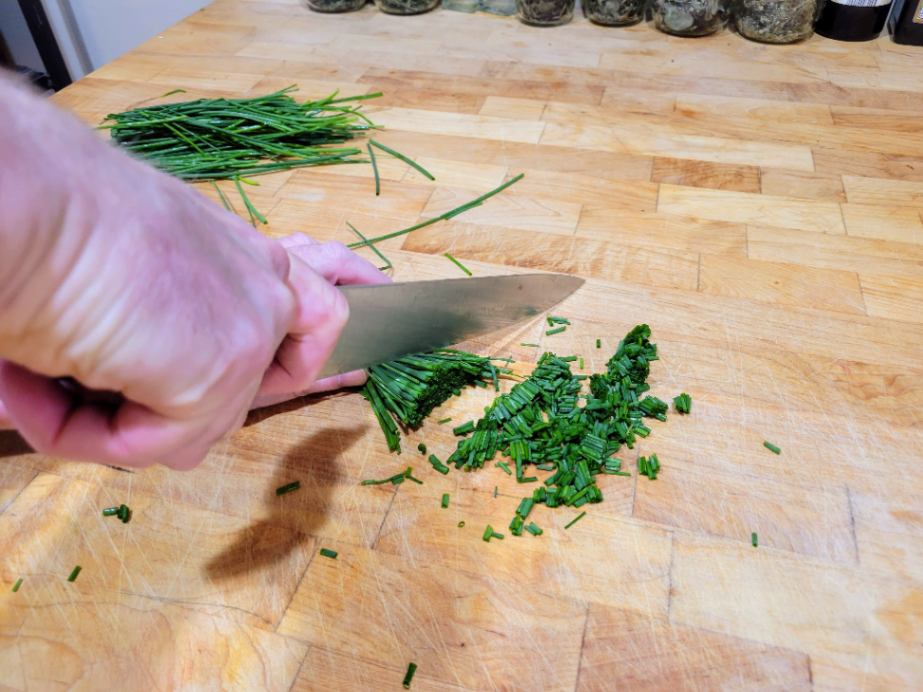
Depending upon the eventual culinary application, dill, and chives are also preserved fairly well using the ice cube tray method described above.
Blanch and Freeze Herbs
Blanching before freezing is an excellent method for preserving the color and flavor of tender herbs such as basil, parsley, mint, and chives for culinary use.
The blanching process involves briefly immersing the herb leaves in boiling water for 15-20 seconds, and then immediately submerging them in ice water to stop the cooking process to maintain their vibrant green color.
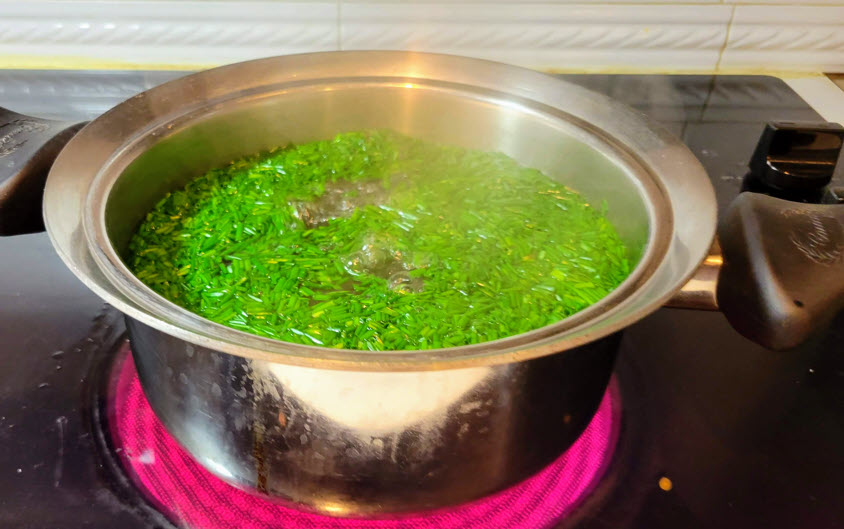
After blanching, pat your herbs dry with paper towels and follow the flash-freezing process described below.
Flash Freezing Herbs
Although replicating industrial flash-freezing processes with air circulation at ultra-low temperatures may prove challenging in home environments, it is generally feasible to achieve satisfactory results when rapidly cooling herbs at home.
The flash-freezing process works better with woody herbs like rosemary, sage, thyme, and oregano, but it can still be an effective freezing method for more delicate herbs, particularly if they’ve been blanched first. For optimal flavor preservation, it’s generally recommended to use these delicate herbs within 6 months after flash-freezing.
To flash-freeze your herbs, it’s important to freeze your herbs as quickly as possible. To do so:
- Lay out your herbs in a single layer on a cooking tray.
- Place them in a cold freezer (preferably a deep freezer)
- Let the herbs freeze for 1-2 hours.
Once frozen, transfer the frozen herb leaves to a freezer bag or vacuum pack them for longer-term storage. It’s best to remove as much air as possible to prevent freezer burn. Be sure to label and date your freezer bags appropriately.
Conclusion
Freezing is a superb preservation method for delicate herbs like basil, parsley, cilantro, dill, chives, and mint. Each herb retains its vibrant flavor and aroma when frozen. By choosing the right freezing technique—such as using ice cube trays, vacuum-packing, blanching, or flash freezing—you can enjoy these herbs year-round. Freezing herbs is a worthwhile culinary investment, adding convenience and flavor to your meals throughout the year.
Frequently Asked Questions (FAQs)
What is the best way to thaw frozen herbs?
The best way to thaw frozen herbs is to remove them from the freezer and use them directly in your cooking. There is no need to thaw them separately.
How long can I keep frozen herbs in the freezer?
When properly stored, frozen herbs can maintain their quality for up to 6-12 months. After this period, they may start to lose some of their flavor.
Should I blanch herbs before freezing them?
Blanching is recommended for certain herbs like basil, parsley, and mint, as it helps preserve their color and flavor, but it’s not necessary for all herbs.
When should I freeze herbs from my garden?
Herbs should be frozen fairly immediately after harvesting them, no longer than 3-4 hours.
For harvesting tips and techniques, check out our guides to harvesting and preserving specific herbs.
Last Updated on 13 October 2023 by Bob Lee

